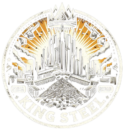Wire Rod
Understanding Wire Rod Iron: A Comprehensive Overview
Wire rod iron is a pivotal material in the construction and manufacturing sectors, serving as the foundation for a myriad of products and structures. This 1000-word article delves into the essence of wire rod iron, exploring its production process, types, applications, advantages, and the future outlook in the industry.
The Basics of Wire Rod Iron
Wire rod iron is a long, thin product produced by rolling hot billets on a series of rolling stands. It is characterized by its round, rectangular, or square cross-section and is typically wound into coils. These rods vary in diameter, usually between 5mm to 18mm, making them versatile for different applications. The primary material used for wire rod production is carbon steel, although other materials like alloy steel are also used depending on the application requirements.
Production Process
The production of wire rod iron involves several critical steps, starting with the extraction and processing of raw iron ore. After purification and conversion into steel, the material is then heated in a furnace to reach the necessary plasticity before being passed through a series of rolling mills. These mills progressively reduce the steel’s thickness to form the wire rod. The final step involves cooling, which can be achieved through various methods, such as air cooling or water quenching, to attain the desired mechanical properties.
Types of Wire Rod Iron
Wire rod iron is categorized based on its chemical composition and the specific treatment it undergoes:
- Low Carbon Wire Rod: Used in producing mesh wire and nails, low carbon wire rod is highly ductile and weldable.
- High Carbon Wire Rod: Ideal for making springs and wire ropes, this type has higher strength and hardness.
- Alloy Steel Wire Rod: Contains additional elements like chromium, nickel, or molybdenum, offering enhanced properties for specialized applications.
Each type serves distinct purposes, influenced by their tensile strength, ductility, and resistance to wear and tear.
Applications
The versatility of wire rod iron allows for its application across various industries:
- Construction: In reinforcing concrete structures and manufacturing nails, screws, and mesh fencing.
- Automotive: Used in the production of tire cord, springs, and other critical components.
- Electrical: For making cables and conductors due to its excellent conductivity.
- Agriculture: In creating fencing, greenhouse structures, and equipment.
This broad applicability underscores the material’s integral role in everyday infrastructure and tools.
Advantages of Wire Rod Iron
The popularity of wire rod iron stems from its numerous benefits:
- Versatility: Its wide range of types and diameters allows for extensive applications.
- Durability: High tensile strength and resistance to wear make it suitable for long-term use in construction and machinery.
- Cost-Effectiveness: Compared to other materials, wire rod iron offers an economical solution without compromising on quality.
- Recyclability: Steel is one of the most recycled materials, making wire rod iron an environmentally friendly option.
These advantages ensure that wire rod iron remains a staple in industrial and construction projects.
Challenges and Solutions
Despite its benefits, the production and use of wire rod iron are not without challenges. The industry faces issues related to environmental impact, including high energy consumption and carbon emissions. However, advancements in production technology, such as electric arc furnaces and continuous casting, are making processes more efficient and sustainable. Additionally, the development of new alloys and treatment methods is enhancing the material’s performance and application range.
The Future of Wire Rod Iron
The future of wire rod iron looks promising, with ongoing research and technological advancements aiming to improve its quality and environmental footprint. Innovations in metallurgy and processing techniques continue to expand its applications and efficiency. Moreover, the increasing focus on sustainability is driving the industry towards greener production methods and the use of recycled materials.
As global infrastructure and manufacturing demands grow, the wire rod iron industry is poised to meet these needs with enhanced products and processes. Its adaptability, coupled with a commitment to innovation and sustainability, ensures that wire rod iron will remain a vital material in the construction and manufacturing landscapes.
Conclusion
Wire rod iron is a fundamental material that supports a wide range of industries, from construction to automotive and beyond. Its production process, types, and applications highlight its versatility and importance. Despite facing environmental challenges, the industry is evolving through technological advancements and a focus on sustainability. As we look to the future, wire rod iron continues to stand as a critical material, promising to meet the growing and diverse demands of the global market.
